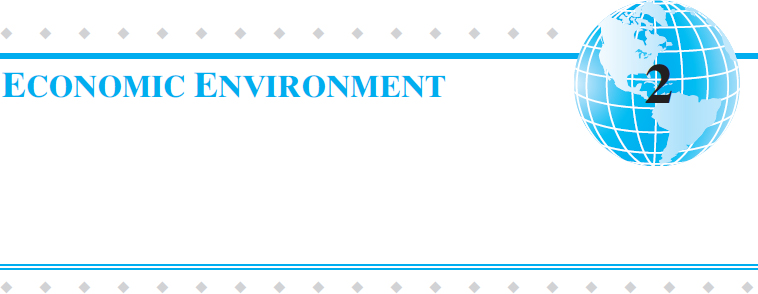
 HAPTER OVERVIEW
HAPTER OVERVIEW
- INTERTWINED WORLD ECONOMY
- COUNTRY COMPETITIVENESS
- EMERGING ECONOMIES
- EVOLUTION OF COOPERATIVE GLOBAL TRADE AGREEMENTS
- INFORMATION TECHNOLOGY AND THE CHANGING NATURE OF COMPETITION
- REGIONAL ECONOMIC ARRANGEMENTS
- MULTINATIONAL CORPORATIONS
At no other time in economic history have countries been more economically interdependent than they are today. Although the second half of the twentieth century saw the highest-ever sustained growth rates in Gross Domestic Product (GDP) in history, the growth in international flows in goods and services (called international trade) has consistently surpassed the growth rate of the world economy. Simultaneously, the growth in international financial flows—which includes foreign direct investment, portfolio investment, and trading in currencies—has achieved a life of its own. Thanks to trade liberalization heralded by the General Agreement on Tariffs and Trade (GATT) and the World Trade Organization (WTO), the GATT's successor, the barriers to international trade and financial flows keep getting lower.
However, the first decade of the 21st century has been beset with a recessionary world economy. For example, growth in the value of the United States' trade decelerated throughout 2001. Western Europe's merchandise exports and imports ...
Get Global Marketing Management, 6th Edition now with the O’Reilly learning platform.
O’Reilly members experience books, live events, courses curated by job role, and more from O’Reilly and nearly 200 top publishers.

